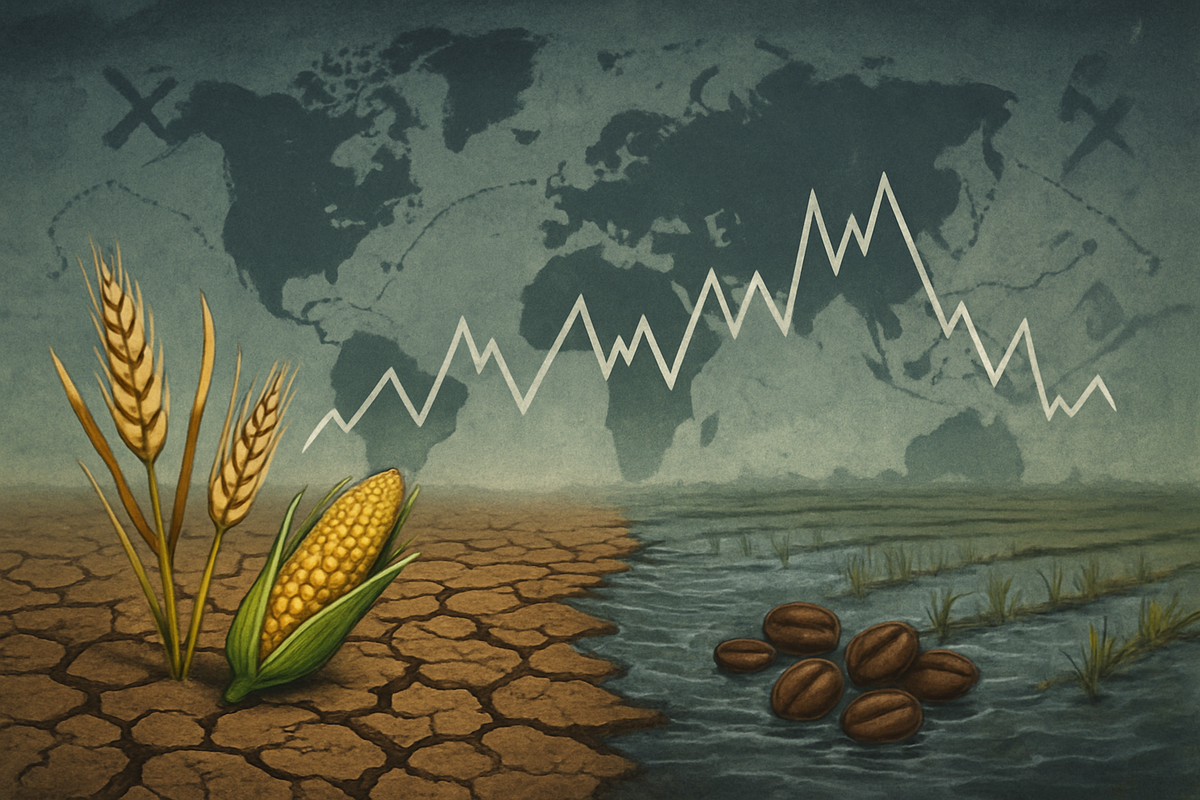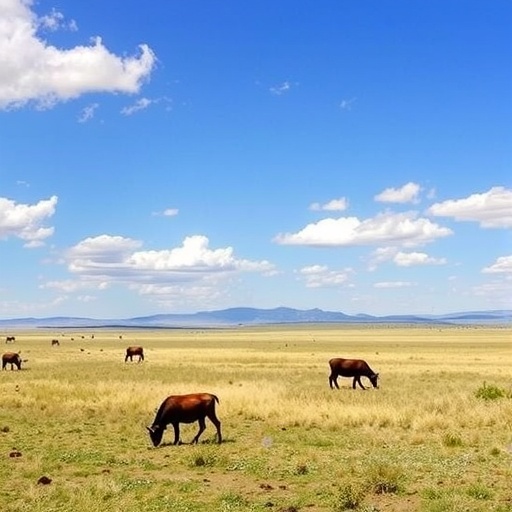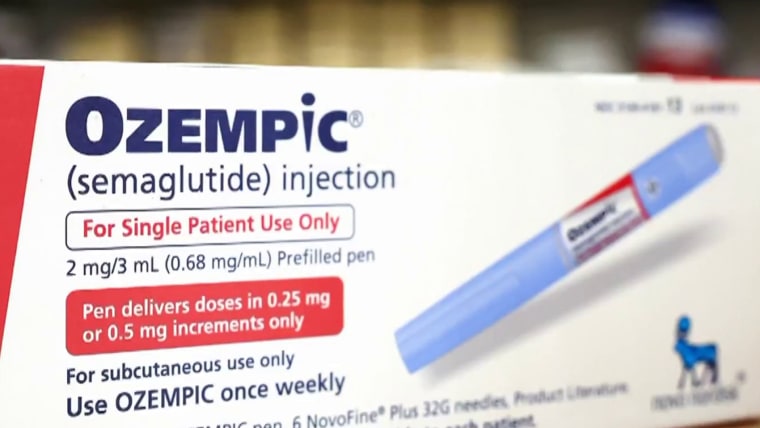American farmers warn this year feels especially dire. What happens next? – USA Today

Report on the 2025 Agricultural Economic Crisis and its Implications for Sustainable Development Goals
An emergent economic crisis in the American agricultural sector during 2025 presents significant challenges to the achievement of several Sustainable Development Goals (SDGs). Farmers are confronting a combination of inflated operating costs, depressed crop prices, and climate-related disruptions, threatening rural livelihoods and the stability of food systems. This report analyzes the crisis through the lens of the SDGs, focusing on economic, social, and environmental dimensions.
Economic Pressures and Threats to SDG 8 (Decent Work and Economic Growth)
The financial viability of farming operations is under severe strain, directly impacting rural economies and the principles of SDG 8.
Key Economic Factors
- Negative Profit Margins: For the third consecutive year, farmers face widening negative profit margins as high production costs for inputs like seeds, fertilizer, and machinery are not offset by crop prices.
- Commodity Price Collapse: Abundant harvests have led to record or near-record yields for soybeans and corn, causing prices to fall by approximately 40% and 50%, respectively, from their 2022 peaks.
- Economic Ripple Effects: Financial hardship forces farmers to reduce spending on essential equipment and other goods, stifling economic activity in rural communities and undermining sustainable economic growth.
Impacts on Food Security and Sustainable Agriculture (SDG 2 & SDG 13)
The current crisis poses a direct threat to long-term food security and the promotion of sustainable agricultural practices, central tenets of SDG 2 (Zero Hunger) and SDG 13 (Climate Action).
Challenges to Production Systems
- Climate-Related Crop Loss: Historic flooding in early 2025 resulted in significant crop destruction, with some farmers losing up to 25% of their corn yield. This event highlights the vulnerability of agricultural systems to extreme weather events, a key concern of SDG 13.
- Threat to Generational Farming: The economic downturn risks the loss of a generation of farmers, particularly younger operators with less equity. This jeopardizes the continuity of food production and the agricultural knowledge base, which is crucial for achieving Zero Hunger.
- Economic Instability vs. Food Supply: While current harvests are abundant, the underlying economic instability of producers threatens the resilience and long-term sustainability of the food supply chain.
Global Trade, Tariffs, and SDG 17 (Partnerships for the Goals)
International trade disputes are exacerbating the economic crisis, underscoring the importance of stable global partnerships for achieving sustainable development as outlined in SDG 17.
Trade and Market Access Issues
- Tariff Concerns: Trade groups express concern that tariffs could further increase import costs and provoke retaliatory actions from key trading partners, disrupting global supply chains.
- Loss of Key Export Markets: China, a primary importer of U.S. soybeans, has shifted purchases to other suppliers like Brazil in response to trade disputes. This loss of a major market has severe financial consequences for American farmers.
- Search for New Partnerships: Efforts are underway to establish new or expanded export markets in countries such as Indonesia, Malaysia, and the Philippines. However, replacing the purchasing power of established partners is a significant challenge, highlighting the fragility of global trade networks.
Policy Interventions and Support for SDG 1 (No Poverty)
Government responses are being formulated to mitigate the crisis, aiming to provide a safety net for farmers and prevent a rise in rural poverty, in line with SDG 1.
Proposed and Implemented Measures
- Delayed Subsidies: The administration has announced over $60 billion in subsidies, but these funds are not scheduled for distribution until late 2026, leaving a critical 13-month gap where farmers lack financial support.
- Potential for Bailout Packages: The administration is reportedly prepared to authorize relief payments to compensate farmers for trade-related losses, similar to programs implemented during previous trade disputes.
- Advocacy for Policy Changes: Agricultural trade groups are calling for immediate government action to remove trade barriers, finalize new trade agreements, and address high input costs to ensure the sector’s survival.
Analysis of Sustainable Development Goals in the Article
1. Which SDGs are addressed or connected to the issues highlighted in the article?
-
SDG 2: Zero Hunger
- This goal is central to the article, which focuses on the economic viability of farmers who produce essential food commodities like corn and soybeans. The article discusses challenges to food production, including crop losses from flooding and economic pressures that threaten the livelihoods of farmers, which are foundational to ensuring food security.
-
SDG 8: Decent Work and Economic Growth
- The article details an “economic crisis hitting rural America,” highlighting the financial struggles of farmers. Issues such as “widening negative profit margins,” inflated operating costs, and the risk of losing a “generation of farmers” directly relate to the goal of promoting sustained, inclusive, and sustainable economic growth and decent work for all. The ripple effects on the broader rural economy are also a key concern.
-
SDG 13: Climate Action
- The article explicitly mentions that “Historic flooding…wiping out as much as 25% of his corn yield.” This points to the direct impact of climate-related extreme weather events on agriculture, connecting the farmers’ struggles to the urgent need for climate action and adaptation to strengthen resilience against such disasters.
-
SDG 17: Partnerships for the Goals
- The significant discussion on international trade disputes, tariffs, and the search for new export markets connects directly to this goal. The article highlights how trade policies, such as tariffs and retaliatory duties from China, impact farmers. The call to “remove trade barriers” and establish new trade agreements with countries like Indonesia reflects the importance of global partnerships and a stable, rules-based trading system.
2. What specific targets under those SDGs can be identified based on the article’s content?
-
Target 2.3: Double the agricultural productivity and incomes of small-scale food producers
- The article is centered on the financial hardship of family farmers like Heath Donner. The mention of an “economic crisis,” “widening negative profit margins,” and falling crop prices (corn down 50%, soybeans down 40%) directly contradicts the aim of this target, highlighting the urgent need to support farmers’ incomes.
-
Target 2.4: Ensure sustainable food production systems and implement resilient agricultural practices
- The article’s reference to “Historic flooding” that destroyed a significant portion of a farmer’s crop underscores the vulnerability of current agricultural systems to climate-related disasters. This points to the need for more resilient practices to adapt to extreme weather, as outlined in this target.
-
Target 13.1: Strengthen resilience and adaptive capacity to climate-related hazards and natural disasters
- This target is directly relevant due to the impact of “Historic flooding” on the farm’s corn yield. The farmer’s significant loss demonstrates a lack of adaptive capacity to this climate-related hazard, emphasizing the importance of measures to strengthen resilience in the agricultural sector.
-
Target 17.10: Promote a universal, rules-based, open, non-discriminatory and equitable multilateral trading system
- The article discusses the negative effects of trade disputes, tariffs, and “retaliatory duties” on U.S. farmers. The call from the National Corn Growers Association to “remove trade barriers” and the concerns over China’s purchasing decisions reflect the challenges in maintaining an open and stable trading system, which this target aims to promote.
3. Are there any indicators mentioned or implied in the article that can be used to measure progress towards the identified targets?
-
Indicators for Farmer Income and Productivity (Target 2.3)
- Profit Margins: The article states that farmers have faced “widening negative profit margins” for three consecutive years. This is a direct measure of their economic well-being.
- Commodity Prices: Specific figures are given, such as soybean prices being “down roughly 40%” and corn prices “down about 50%.” These are key indicators of farmer income.
- Production Costs: The article notes that costs for seeds, fertilizer, and machinery “remain near record highs,” which is a critical variable in calculating farmer profitability.
-
Indicators for Agricultural Resilience (Targets 2.4 & 13.1)
- Crop Loss from Disasters: The article provides a specific data point: “wiping out as much as 25% of his corn yield” due to flooding. This percentage serves as a direct indicator of the agricultural system’s vulnerability to climate-related disasters.
-
Indicators for International Trade (Target 17.10)
- Tariff Levels: The impact of retaliatory duties is quantified as adding “about $2 per bushel to the cost for importers,” serving as an indicator of trade barriers.
- Export Market Concentration: The article mentions that China imports “roughly 60% of the world’s soybean supplies,” indicating a high dependency on a single market. Diversifying to other countries like Indonesia is an implied measure of progress.
4. Table of SDGs, Targets, and Indicators
| SDGs | Targets | Indicators |
|---|---|---|
| SDG 2: Zero Hunger |
2.3: Double the agricultural productivity and incomes of small-scale food producers.
2.4: Ensure sustainable food production systems and implement resilient agricultural practices. |
|
| SDG 8: Decent Work and Economic Growth | 8.2: Achieve higher levels of economic productivity through diversification, technological upgrading and innovation. |
|
| SDG 13: Climate Action | 13.1: Strengthen resilience and adaptive capacity to climate-related hazards and natural disasters. |
|
| SDG 17: Partnerships for the Goals | 17.10: Promote a universal, rules-based, open, non-discriminatory and equitable multilateral trading system. |
|
Source: usatoday.com

What is Your Reaction?
 Like
0
Like
0
 Dislike
0
Dislike
0
 Love
0
Love
0
 Funny
0
Funny
0
 Angry
0
Angry
0
 Sad
0
Sad
0
 Wow
0
Wow
0
















































:focal(1500,1000)/https://media.globalcitizen.org/a6/9a/a69a4720-d8a1-4715-b596-18738d03c05c/rotary_polio_hero_image.jpg?#)







/countries/sri-lanka/photo-credit---dmc-sri-lanka.tmb-1200v.jpg?sfvrsn=dc298bcc_1#)


















